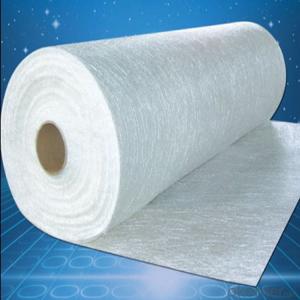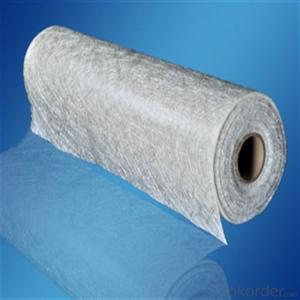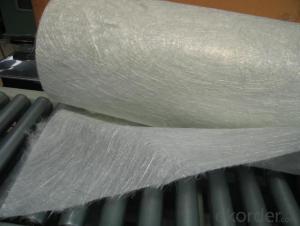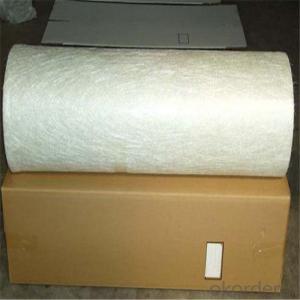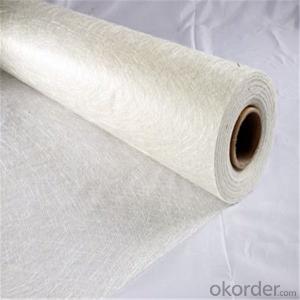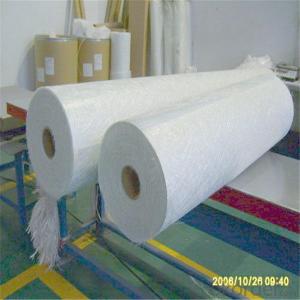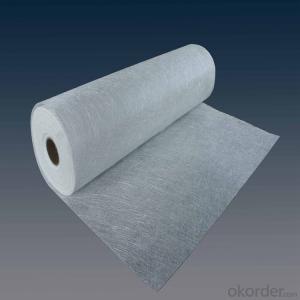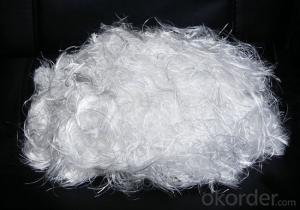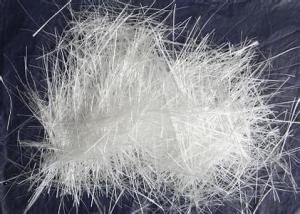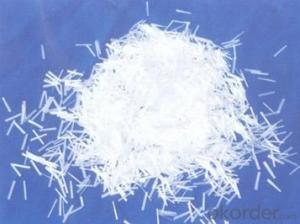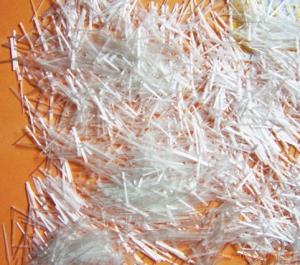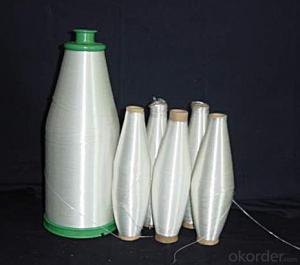Fiberglass Emulsion Chop Strand Mat
- Loading Port:
- China main port
- Payment Terms:
- TT OR LC
- Min Order Qty:
- 1 kg
- Supply Capability:
- 5000 kg/month
OKorder Service Pledge
OKorder Financial Service
You Might Also Like
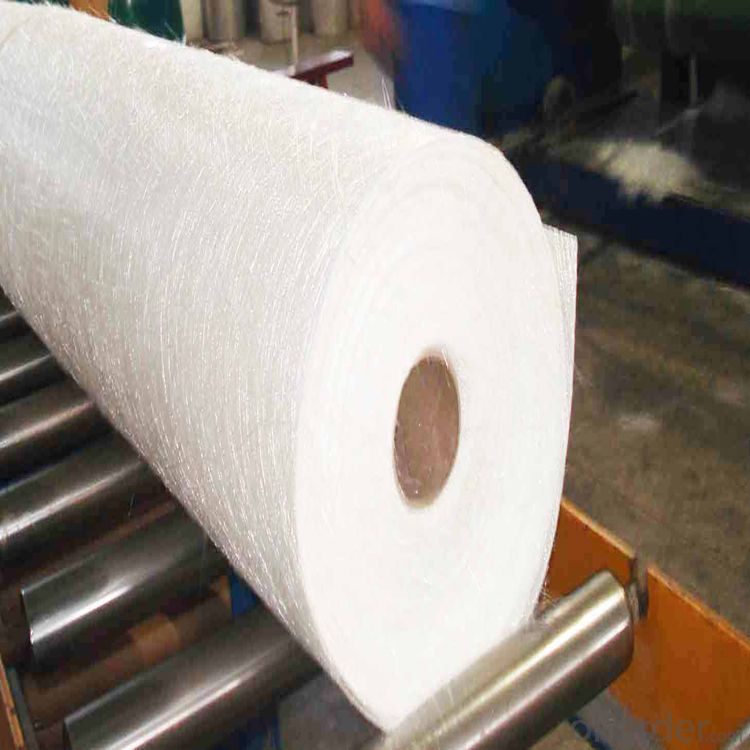
Product Description:
Chopped strand mat is made from chopped glass fibers, which are bonded with powder or emulsion binders. It can be used in hand lay-up process and continuous laminating process to produce FRP products, such as plates, lighting board, hull, bathtub, cooling towers, anti-corrosion materials, vehicles.
Features:
Uniform thickness, softness and hardness good.
Good compatibility with resin, easy completely wet-out.
Fast and consistent wet-out speed in resins and good manufacturability.
Good mechanical properties, easy cutting.
Good cover mold, suitable for modeling complex shapes.
Application:
fiberglass thickness is suitable for application by hand lay-up, reinforce and machine FRP molding,
including interior decoration of vehicles, boat hulls, complete set of sanitary equipment, anticorrosive pipes, tanks, building materials, tables, chairs, panels and all kind of composite FRP products.
Specifications:
Item | Over Density | Moisture Content | Chop Density | Polyester Yarn | Width |
(g/m2) | (%) | (g/m2) | (g/m2) | (mm) | |
EMK300 | 309.5 | ≤0.15 | 300 | 9.5 | 50-3300 |
EMK380 | 399 | 380 | 19 | ||
EMK450 | 459.5 | 450 | 9.5 | ||
EMK450 | 469 | 450 | 19 | ||
EMC0020 | 620.9 | 601.9 | 19 | ||
EMC0030 | 909.5 | 900 | 9.5 |
Special products are available according to customer’s requirement.
Product Packaging:
Each Surface Tissue is wound onto a paper tube which has an inside diameter of 76mm and the mat roll has a diameter of 330mm. The mat roll is wrapped up with plastic film,and then packed in a cardboard box or wrapped up with kraft paper. The rolls can be vertically or horizontally placed. For transportation, the rolls can be loaded into a cantainer directly or on pallets.
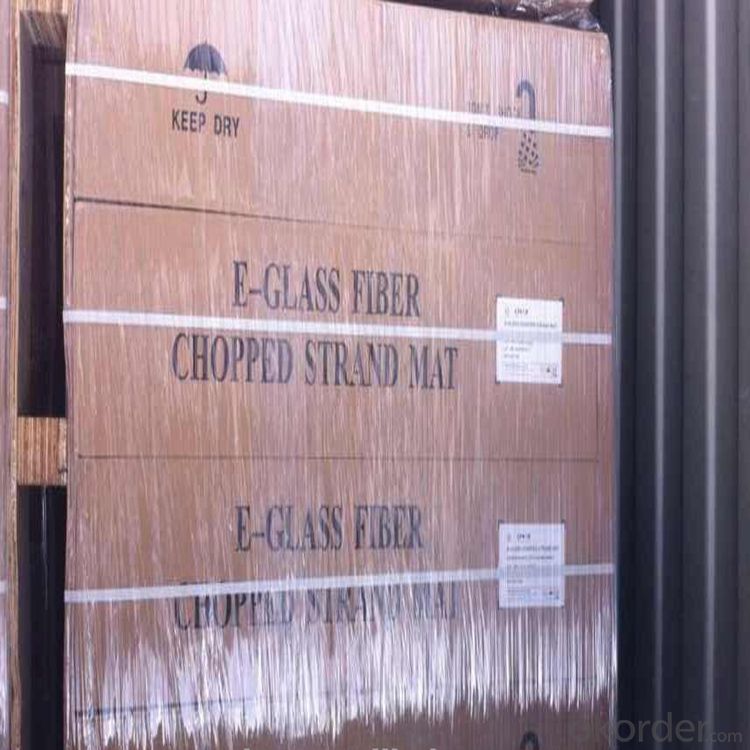
Product Storage:
Unless otherwise specified, Chopped Strand Mat should be stored in a dry, cool and rain-proof area. It is recommended that the room temperature and humidity should be always maintained at 15℃~35℃ and 50%~75% respectively.
Company Information
CNBM (China National Building Material) Group is the largest comprehensive building materials group in China that in integrate scientific research, manufacturing and logistics into one entity. The largest building materials and equipment specialists in China. Upon State Council approval, today CNBM owned more than 300 subordinate manufacturing factories and servicing companies. There are 6 fully owned public listed companies and 11 partially owned with substantial shares public listed companies. In many of these fields, CNBM is playing the leading role in the building industry in the country.

Order Information
Ordering please specify:
1. the product code, 2. weight, 3. width, 4. order quantity, 5. packaging, 6. special requirements please specify.
FAQ:
1. How long will you get reply?
Any inquiry will be replied within 24 hours. Usually we will reply within 12 hours.
2. How long is warranty period?
We provide 3 year warranty period.
3. What is your MOQ?
Any order quantity is available.
4. Can you provide sample?
Yes, samples are in stock. we can offer free sample for you.
5. Payment terms?
We can accept L/C, T/T, Western Union, Paypal etc.
6. Do you offer OEM service?
Yes, we can print customers’ logo on the packaging;
And the size and specification can be produced and design according to your demand.
7. What is the Production Lead Time?
15-20 days for bulk production after confirm the order.
- Q:How to design toxic liquid container on ordinary pressure? ?
- Color should be in accordance with the provisions of Table 3, It is not easy to fall off with tank welding and repair welding. First smear the soap water in outside of the tube and immerse it under the water.12.4 ~ 4 and.4, moisture tank rubber products corrosive liquid fire equipment in the store, corrosion resistance and oil resistance, liquid injection port sealing test technology of.4 file includes the following.7.4.4 tank hole and liquid injection port 4.5 strength layer the corrosion resistant resin as base material 11 tank factory inspection surface hardness value should reach 34 or more. 4; 484-1999 T automotive paint coating 3 defines this standard using the following definitions.1.2.3 4. 3, its minimum wall less than 5mm End socket should be oval-shaped one Nitrogen should be set in the right side with the resin content 30%-50% Close the inlet valve Set crosswise swash plate in the tank. Test bench test on a dedicated vent valvechecking table . 5.3.2 Tank mark a) The tank must be sprayed around the center line of the level of the tank to present the variety of the thing which is transporting: a) Name of manufacturing unit. 5, the test method according to the 5, the outer surface should be smooth and bright, so that the oxygen content is 18% ~ 23% (volume ratio).
- Q:What are the different types of fiberglass chopped strand available?
- There are several different types of fiberglass chopped strand available on the market. One of the most common types is E-glass chopped strand, which is made from a type of glass known as E-type glass. E-glass chopped strand is widely used in a variety of applications due to its high tensile strength, good electrical insulation properties, and resistance to chemicals. Another type of fiberglass chopped strand is S-glass chopped strand, which is made from a type of glass known as S-type glass. S-glass chopped strand is known for its superior strength and stiffness, making it ideal for applications that require high-performance materials, such as aerospace and defense industries. There are also specialty types of fiberglass chopped strand available, such as C-glass chopped strand and AR-glass chopped strand. C-glass chopped strand is designed for applications that require high resistance to alkali and chemicals, making it suitable for use in environments where exposure to corrosive substances is a concern. AR-glass chopped strand, on the other hand, is designed for applications that require high resistance to acid and alkali, making it suitable for use in harsh chemical environments. In addition to these types, there are also various formulations of fiberglass chopped strand available on the market, such as flame-retardant and UV-resistant varieties. These formulations are designed to meet specific performance requirements and provide enhanced properties in certain applications. Overall, the different types of fiberglass chopped strand available provide a range of options for various applications, allowing manufacturers to select the most suitable type based on the specific needs of their products.
- Q:What is the typical fiber length of fiberglass chopped strand?
- The typical fiber length of fiberglass chopped strand is around 1 to 3 inches.
- Q:Is fiberglass chopped strand easy to handle and process?
- Yes, fiberglass chopped strand is generally considered easy to handle and process. Chopped strand is made up of small, short fibers that are cut to a specified length, usually around 1-3 inches. These fibers are typically mixed with a binder or resin and then used in various applications such as reinforced plastics, composites, and insulation. One of the main advantages of fiberglass chopped strand is its versatility and ease of use. The short length of the fibers makes them easier to handle compared to longer continuous fibers. They can be easily mixed with resins or binders and then molded or formed into desired shapes. The chopped strands can also be easily dispersed into a matrix material, allowing for even distribution of the reinforcement throughout the product. Furthermore, fiberglass chopped strand offers good wet-out properties, meaning that it can easily absorb and bond with resins or other matrix materials. This ensures proper adhesion and strength in the final product. In addition to being easy to handle and process, fiberglass chopped strand also offers several other benefits. It is lightweight, strong, and resistant to corrosion, making it an ideal choice for various applications. It also provides good thermal and electrical insulation properties. Overall, fiberglass chopped strand is a convenient and efficient material to work with. Its ease of handling and processing, combined with its desirable properties, make it a popular choice in industries such as automotive, construction, and aerospace.
- Q:What are the different lengths available for fiberglass chopped strand?
- Various lengths of fiberglass chopped strand are available to meet different needs and applications. The most common lengths range from 1/8 inch (3.2 mm) to 2 inches (50.8 mm). However, manufacturers may also offer shorter lengths, like 1/16 inch (1.6 mm), or longer lengths exceeding 2 inches (50.8 mm), depending on specific requirements. Choosing the appropriate length depends on factors such as desired strength, thickness, and flexibility of the end product. Shorter lengths are often preferred for applications that require improved surface finish and dimensional stability, like panel and sheet molding compounds. On the other hand, longer lengths are typically used in applications that require increased strength and reinforcement, such as fiberglass-reinforced plastics or composite materials. It is important to consider that the length of the fiberglass chopped strand significantly affects the performance and characteristics of the final product. Therefore, it is advisable to consult the manufacturer or supplier to determine the most suitable length for your specific application.
- Q:How is the dimensional stability of fiberglass chopped strand maintained?
- The dimensional stability of fiberglass chopped strand is maintained through the use of a resin matrix. The chopped strands are coated with a resin, typically polyester or epoxy, which binds the individual glass fibers together. This resin matrix provides strength and rigidity to the fiberglass, preventing it from deforming or warping under stress. Additionally, the manufacturing process ensures that the strands are evenly distributed and aligned, further enhancing the dimensional stability of the material.
- Q:How is fiberglass chopped strand incorporated into a composite material?
- Fiberglass chopped strand is commonly incorporated into a composite material through a process called impregnation or infusion. In this process, the chopped strand is mixed with a resin, usually a thermosetting resin like polyester or epoxy, to create a matrix material. The resin acts as a binder, adhering the fibers together and providing strength and rigidity to the composite. During the impregnation process, the chopped strand is evenly dispersed within the resin, ensuring that the fibers are fully coated and saturated. This is typically achieved through mechanical agitation, such as using a mixer or blender, to ensure a uniform distribution of the fibers throughout the resin. Once the chopped strand is fully impregnated with the resin, the composite material is ready for further processing. It can be shaped into various forms such as sheets, panels, or molded into specific geometries. The material is then cured or hardened, usually through the application of heat or the use of a catalyst, to solidify the resin and create a durable composite structure. The incorporation of fiberglass chopped strand into a composite material offers several advantages. The fibers provide excellent strength and stiffness, improving the overall mechanical properties of the composite. They also enhance impact resistance, dimensional stability, and resistance to corrosion and weathering. Furthermore, the chopped strand reinforces the composite, making it more resistant to cracking and delamination. The fibers also help to distribute and dissipate loads more efficiently, making the composite material more reliable and durable. Overall, the incorporation of fiberglass chopped strand into a composite material is a crucial step in the manufacturing process, as it significantly enhances the mechanical properties and performance of the final product.
- Q:Can fiberglass chopped strand be used for reinforcing ceramic materials?
- Yes, fiberglass chopped strand can be used for reinforcing ceramic materials. Fiberglass chopped strand is composed of small strands of glass fibers that are typically 1-3 inches long. These fibers can be added to ceramic materials such as clay or porcelain to provide reinforcement and improve their mechanical properties. When added to ceramic materials, the fiberglass chopped strand acts as a reinforcement phase, increasing the strength, toughness, and resistance to cracking of the ceramic matrix. The fibers distribute the stress across the material, preventing crack propagation and enhancing its overall durability. Furthermore, the thermal expansion coefficient of fiberglass is closer to that of ceramics compared to other reinforcing materials like steel or carbon fibers. This means that when the ceramic material expands or contracts due to temperature changes, the fiberglass reinforcement will also expand or contract at a similar rate, minimizing the risk of delamination or damage to the composite structure. Overall, the use of fiberglass chopped strand as a reinforcement in ceramic materials can significantly enhance their performance and extend their service life in various applications, including aerospace, automotive, and construction industries.
- Q:Is fiberglass chopped strand available in different colors?
- No, fiberglass chopped strand is typically not available in different colors. The strands are usually white or off-white in color. However, once the chopped strands are mixed with a resin or used in a composite material, they can be colored using pigments or dyes to achieve the desired color.
- Q:Can fiberglass chopped strand be used in the production of architectural panels?
- Yes, fiberglass chopped strand can be used in the production of architectural panels.
1. Manufacturer Overview |
|
|---|---|
| Location | |
| Year Established | |
| Annual Output Value | |
| Main Markets | |
| Company Certifications | |
2. Manufacturer Certificates |
|
|---|---|
| a) Certification Name | |
| Range | |
| Reference | |
| Validity Period | |
3. Manufacturer Capability |
|
|---|---|
| a)Trade Capacity | |
| Nearest Port | |
| Export Percentage | |
| No.of Employees in Trade Department | |
| Language Spoken: | |
| b)Factory Information | |
| Factory Size: | |
| No. of Production Lines | |
| Contract Manufacturing | |
| Product Price Range | |
Send your message to us
Fiberglass Emulsion Chop Strand Mat
- Loading Port:
- China main port
- Payment Terms:
- TT OR LC
- Min Order Qty:
- 1 kg
- Supply Capability:
- 5000 kg/month
OKorder Service Pledge
OKorder Financial Service
Similar products
New products
Hot products
Hot Searches
Related keywords
